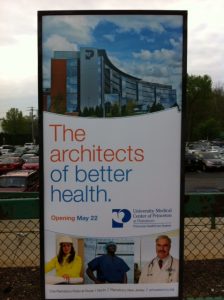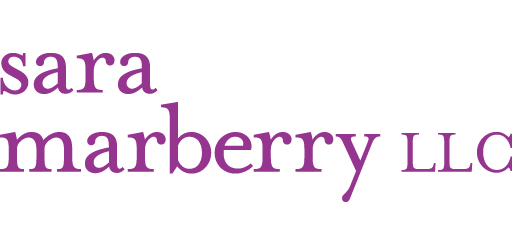
I’m on an evidence-based design blog post roll, so I figure I might as well continue it. I’ve been looking for project examples where the team used all 8 steps of the evidence-based design process, which you may recall from my post last week, are:
- Define EBD goals and objectives (organizational readiness stage)
- Find relevant sources of evidence (pre-design stage)
- Critically interpret relevant evidence (design stage)
- Create and innovate EBD concepts (design stage)
- Develop a hypothesis (design stage)
- Collect baseline performance measures (design stage)
- Monitor implementation of EBD concepts (construction stage)
- Measure post-occupancy performance results (occupancy stage)
Most architects and designers that I’ve contacted admit they have used some of the steps on recent projects, but not all.
Part of the reason, I suspect, is that the evidence-based design process was only recently formally defined (EDAC Study Guide 1, 2008), and recently completed projects were probably started 8-10 years ago. Another reason may be that no healthcare organization has committed to spending the time and resources to do all 8 steps.
Some of the participants in the Pebble Project whose buildings have opened in the past year have come close — University Medical Center of Princeton, Ann & Robert H. Lurie Children’s Hospital, and Palomar Health. Their facilities are incorporate, and in some cases, innovate, many evidence-based design concepts.
But whether they complete that last important step of measuring their performance results will be interesting to see. Because many of those who join the Pebble Project do so with good intentions to go all the way, but for whatever reason, don’t make it.
What are some of the things that inhibit your project team from using all 8 steps in the evidence-based design process?
P.S. Please do me a favor — if you liked this post and like this blog, please share it with others by sending them the link and/or post it on your Twitter, LinkedIn, or Facebook, etc. Also, don’t forget to subscribe, so you’ll get emails when new content is posted. Thanks!
If you like this post, please share.

What’s my story? I’m a healthcare and senior living design knowledge expert who writes and speaks frequently about trends and issues affecting these two industries. I’m also a strategic marketing consultant and content creator, working with companies and organizations who want to improve the quality of healthcare and senior living through the design of the physical environment. You can reach me at [email protected].


10 Responses
Great series Sara! As an EBD “crusader” I appreciate your insights and updates. I have found the EBD process instrumental in getting clients to move outside of their comfort zone and think big during predesign and then to hold space for the big ideas throughout design and construction.
Thanks, Angela! Keep up the good work…
Sara, question for you: When do data collected over many years, still unvetted, become valued in designing an action study?
Since I’m not a researcher, I’m not sure I can answer your question, Susan. Anyone else have an opinion?
I find that clients don’t want to spend the time or resources to do all the steps comprehensively — but when you just take 1-2 core concepts or values that you want to work with, it can be easier and more manageable.
Unfortunately, I think your experience is true of many others, too, Maggie.
Actually at Loma Linda University Health (School of Dentistry), we have. We just need the monetary support to complete the programming. The design and structure has been published. To date, we are completing a software for education and training using abstracts to develop critical thinking skills in assessment and dissemination. Next, we will do using articles and a more rigorous assessment process. Then put together in what we call the Translational Evidence Mechanism to service both clinician and researcher. A prototype of the process does exist as of this date. The process is not discipline specific and maybe configured for any disciplines that services people; in other words, uses shared decision-making to arrive at the best trade-off amongst numerous choices given individual client preferences and values. We also go further than the 8 steps and will include quality control and assurance of the deliverable, in this case, clinical practice guideline or research summary.
That’s great, Janet. You may be the first! I hope you’ll write a paper or article so others can learn from your experience.